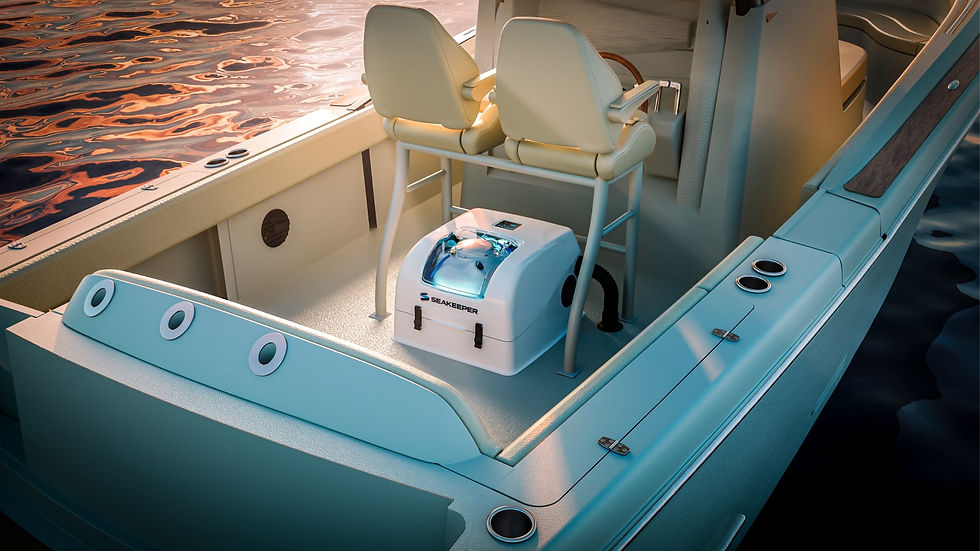Holding Fast: Understanding the Physics of Boat Anchors
- BoatBlurb Contributor

- 2 days ago
- 4 min read
By: Koushik Paul

Every captain knows that an anchor is more than a hunk of metal hanging from the bow. When the wind shifts or the engine fails, it is your boat’s last line of defense. Yet few pieces of equipment rely more on physics than the humble anchor.
Anchors work by converting the horizontal pull of the boat into downward resistance. As the flukes dig in, friction and suction hold the vessel steady. The type of anchor you choose depends on your boat’s size, weight, and the seabed beneath you. Selecting the right one can mean the difference between a peaceful night on the hook and a long drift toward shore.
Here’s a primer on five of the most common anchor types, how they hold, and which environments they perform best in.
Plow Anchor
The plow anchor, as its name suggests, cuts through the seabed like a farmer’s plow. Its single curved fluke buries itself under load, creating a self-setting design that performs well in sand, mud, and clay.
When the boat pulls on the rode, the plow’s shape forces the tip deeper into the bottom. The weight and geometry combine to generate downward force that increases holding strength as tension builds.
Best for: cruising and offshore boats, sand or mud bottoms, variable conditions
Pros: self-resetting, dependable in shifting wind and current
Cons: heavier and bulkier to store than other types
Danforth (Fluke) Anchor
The Danforth, or fluke anchor, is light, efficient, and easy to stow. Two wide flukes pivot to lie flat on the seabed. When tension is applied, they dig in and create a strong suction hold. The design’s power comes from surface area. The larger the flukes, the greater the friction and resistance holding the boat.
This anchor excels in sand and mud, where it can bury deeply. It can, however, lose grip if the pull direction shifts sharply or if the seabed is rocky.
Best for: small to mid-sized boats, sand or mud bottoms, calm to moderate conditions
Pros: excellent holding power for its weight, simple design, easy storage
Cons: struggles in rock or weed, can reset poorly if wind or current changes

Bruce (Claw) Anchor
Developed for offshore oil rigs, the Bruce anchor is known for its claw-shaped design that grips reliably in many bottom types. Its three curved tines allow it to catch and hold through a mix of sand, rock, and coral.
Rather than deep penetration, the Bruce creates hold through friction and broad contact area. It sets quickly and maintains a firm grip under steady load, but can occasionally roll free if wind or tide shifts rapidly.
Best for: cruisers, motor yachts, and mixed or rocky bottoms
Pros: easy to set, versatile across seabeds, ideal for overnight anchoring
Cons: heavy for its holding power, can lose hold when direction changes suddenly

Mushroom Anchor
The mushroom anchor is designed for permanent or long-term use. Shaped like an inverted mushroom cap, it sinks into soft mud and gradually buries itself under its own weight. Over time, silt and sediment build around it, creating suction that locks it in place.
Unlike fluke-style anchors, the mushroom relies on gravity and suction rather than digging. It is best suited for calm lakes or protected harbors where conditions are consistent.
Best for: permanent moorings, calm freshwater, soft mud bottoms
Pros: strong long-term holding, low maintenance, simple design
Cons: poor short-term hold, ineffective on sand or rock
Grapnel Anchor
The grapnel is compact and practical for small craft. Its multiple prongs catch on rocks, coral, or structure to create mechanical grip. When tension builds, the arms flex to absorb shock and reduce strain on the line.
This simple design is a favorite for dinghies, kayaks, and personal watercraft. It is also popular as a secondary or backup anchor because it folds easily for storage.
Best for: small boats, rocky terrain, short-term use
Pros: lightweight, simple, strong hold on rough bottoms
Cons: limited performance in sand or mud, can be difficult to free if snagged

Choosing the Right Anchor
No single anchor excels in every situation. Your choice should match your boat, the conditions, and your boating environment.
Boat size and weight: larger vessels need heavier or more efficient anchors like plow or Bruce designs.
Bottom type: sand and mud favor Danforth or plow anchors, while rock and coral call for Bruce or grapnel types.
Usage: day boaters can rely on lightweight anchors, while cruisers and liveaboards benefit from heavier, self-resetting models.
Anchoring success also depends on your rode. The length, weight, and scope of chain and line determine how well your anchor sets and holds. A well-matched rode can often make more difference than the anchor itself.
Conclusion
Anchors may seem simple, but they are a study in applied physics. Each uses a different principle—weight, suction, friction, or entanglement—to resist the immense forces of wind, waves, and current.
The plow and Bruce designs offer reliable versatility for cruising. The Danforth remains a favorite for small boats in soft bottoms. The mushroom secures long-term moorings, while the grapnel serves as the compact, go-anywhere choice.
Whatever style you choose, knowing how it works and where it performs best will ensure that when you drop the hook, it stays there.




















Comments